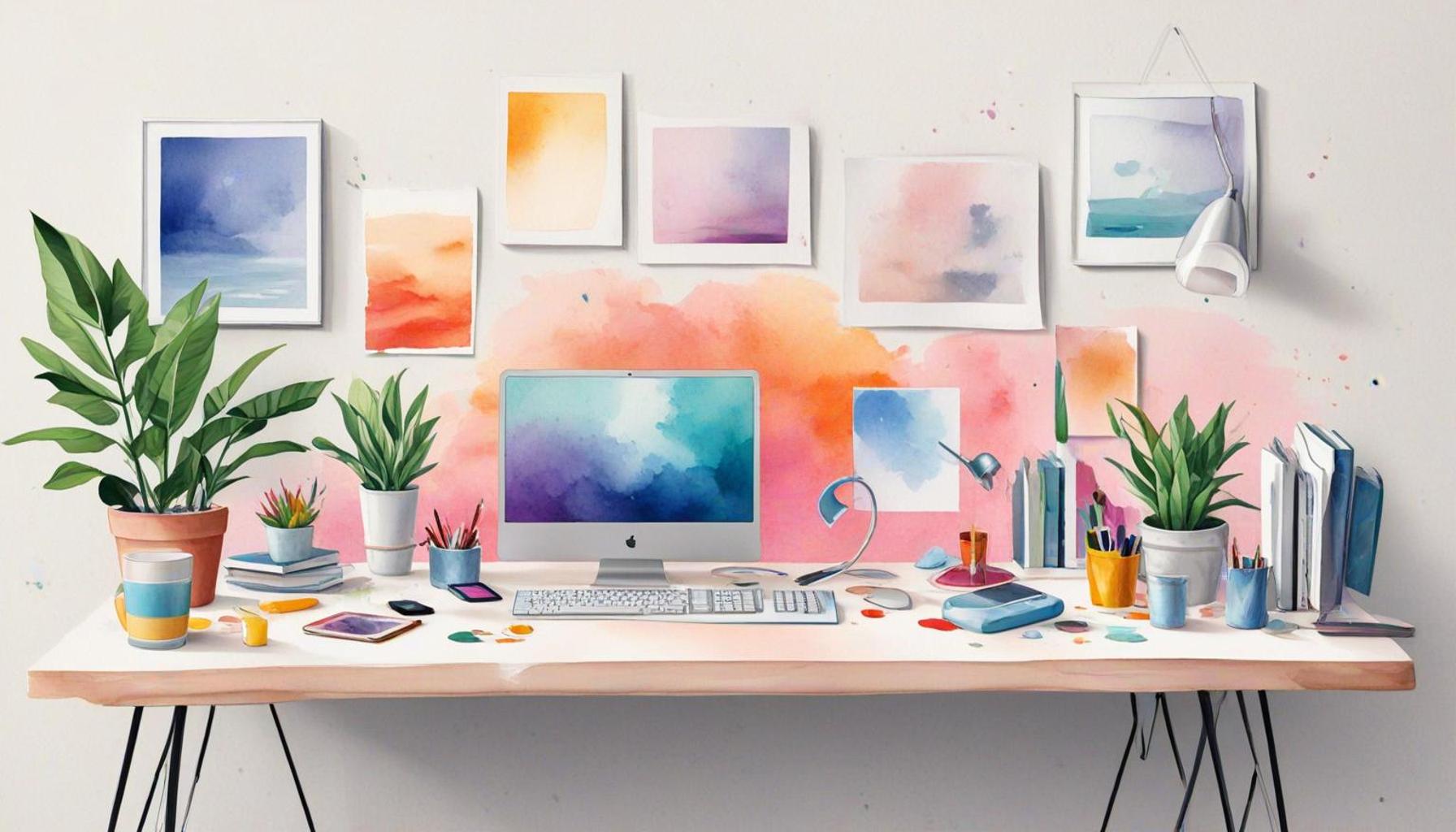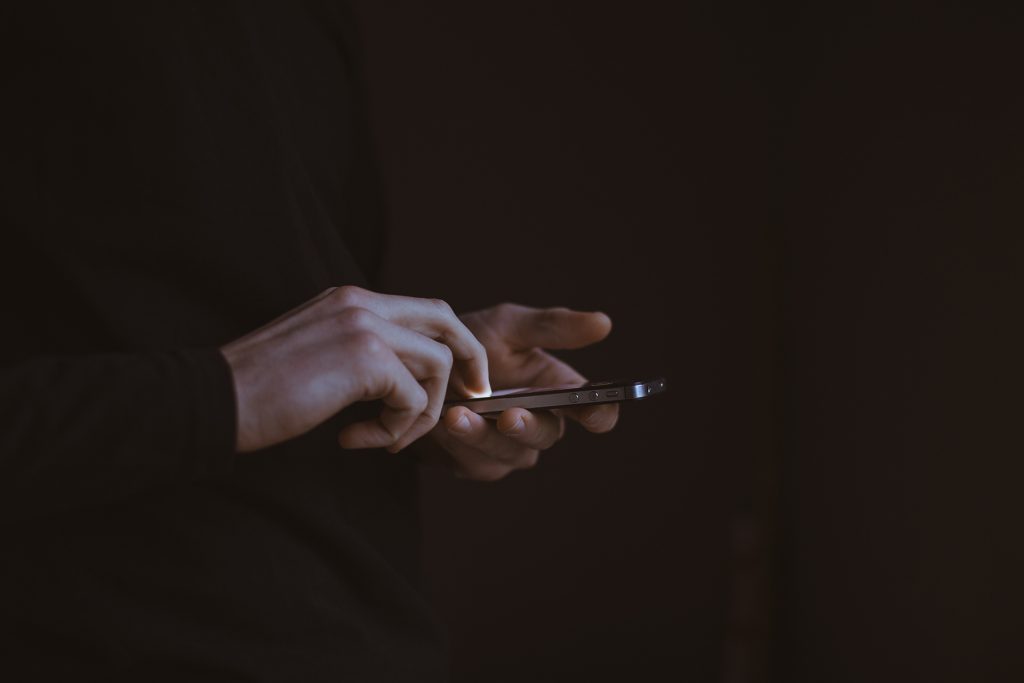Digital Minimalism: How to Organize Your Virtual Space to Increase Productivity

The Challenge of Digital Overload
In recent years, the phenomenon of distractions has escalated dramatically due to the pervasive nature of technology in our lives. With smartphones buzzing with alerts, social media pulling at our attention, and the constant influx of emails, it’s no wonder that many individuals struggle to maintain their focus. Research indicates that the average person checks their phone about 96 times a day, leading to fragmented attention and decreased productivity. This scenario raises a pressing question: how can one navigate the cluttered digital landscape to harness true efficiency?
Understanding Digital Minimalism
Digital minimalism is not merely about reducing the number of apps or notifications; it is a philosophy that challenges the ways we interact with technology. The first step in this transformative journey involves assessing your digital tools for their utility and necessity. Ask yourself, do you really need that social media application that distracts you during work hours? By eliminating extraneous digital tools, you begin to form a streamlined environment that is conducive to productivity.
Creating an Organized Workspace
Consider the differences in your workspace when it is cluttered versus when it is well-organized. A disorganized desktop, bloated with files and icons, can create a sense of chaos that mirrors mental overload. By embracing digital minimalism, you cultivate a workspace where:
- Your desktop is organized, allowing you to locate files swiftly and efficiently.
- Applications are streamlined, utilized strictly for essential tasks, thus enhancing focus.
- Email notifications are managed, enabling dedicated periods for concentrated work without interruptions.
Implementing Effective Strategies
Once you’ve committed to digital minimalism, implementing effective strategies is crucial for sustaining productivity. Start with strict usage limits on social media and non-essential apps. This could mean setting particular times during the day when you allow yourself to check these platforms, rather than succumbing to the constant temptation of notifications.
Routine Deletion and Review
Establishing a routine for deleting old files and unused apps can further declutter your digital space. If you haven’t accessed a particular file in over six months, consider whether it still serves a purpose in your work or personal life. This regular review not only clears space but also helps reinforce a mindset of intentionality and purpose in how you engage with technology.

Fostering a Productive Mindset
Ultimately, digital minimalism extends beyond just organization. It invites a mindset shift towards prioritizing tasks effectively. Instead of juggling multiple projects and becoming overwhelmed, learn to focus on a select few high-impact tasks each day. This approach can significantly amplify your output in a world replete with distractions. Embracing digital minimalism could be your blueprint toward a more productive, fulfilling digital experience.
As you navigate this path, remember that the goal is not to eliminate technology, but rather to engage with it mindfully and purposefully. Through the adoption of these minimalist strategies, you are poised to reclaim your time, enhance your efficiency, and ultimately achieve your goals with clarity and focus.
DISCOVER MORE: Click here to change your shopping habits
Transforming Your Digital Ecosystem
Your digital workspace significantly impacts your productivity levels. A cluttered virtual environment can result in wasted time, increased stress, and an overwhelming sense of chaos that hinders your performance. By leaning into the principles of digital minimalism, you can create a clean and efficient workspace that fosters focus and creativity. To kickstart this transformation, consider taking a closer look at your existing digital practices and tools.
Assessing Essential Tools
The road to a productive digital space begins with a thorough assessment of the tools and apps you currently use. Not every application is created equal; some may enhance your workflow, while others may serve only as distractions. Start by categorizing your digital tools into two primary groups:
- Essential Tools: Identify applications and resources that are crucial for your work. These should streamline tasks, facilitate communication, or help you manage projects efficiently.
- Non-Essential Tools: Take note of apps that you have downloaded but seldom use or those that contribute to your distractions rather than adding value.
Once you have categorized your tools, it’s time to simplify. Consider deleting those non-essential applications and consolidating similar functions into fewer tools. For instance, if you have multiple task management apps, choose a single app that meets all your needs efficiently. This will create a more coherent workspace, minimizing the cognitive load often caused by switching between various platforms.
Optimizing Your Digital Files
In addition to assessing applications, the organization of your digital files plays a critical role in your productivity. A disorganized filing system often leads to frustration and lost time while searching for documents. To counteract this, employ the following strategies to keep your files in check:
- Create a Clear Folder Structure: Establish a logical hierarchy of folders that aligns with your projects or areas of responsibility, making it easier to navigate your files.
- Utilize Descriptive Naming Conventions: Use clear and descriptive names for your files to facilitate quick searches. Include dates or keywords to help remember the content of the files.
- Stick to a Regular Maintenance Schedule: Designate time each month to review your files, delete those that are no longer useful, and reorganize as necessary to maintain order.
By implementing these tailored strategies, you will notice a substantial increase in your ability to locate essential documents quickly, thus enhancing your overall productivity. Digital minimalism is not about eliminating technology but rather about making intentional choices that align your digital tools with your goals and bolster your efficiency.
| Advantage | Description |
|---|---|
| Enhanced Focus | Digital minimalism helps eliminate distractions, allowing for an increase in concentration on tasks at hand. |
| Streamlined Workflow | Organizing your virtual space can simplify your work processes, leading to improved efficiency and productivity. |
By embracing digital minimalism, individuals can achieve a more intentional approach to their online tools and resources. This method empowers users to prioritize their digital habits, ensuring that each app and platform aligns with their goals and values. As a result, the mental clutter often caused by excessive notifications and information overload is significantly reduced, fostering an environment where focus thrives. Furthermore, a streamlined digital workspace not only enhances individual productivity but also has a ripple effect on team dynamics. In a world where collaboration tools are essential, a minimalistic approach ensures that only the necessary tools are utilized, making communication clearer and more efficient. The act of decluttering your virtual space can ultimately lead to a more mindful, productive daily routine, encouraging individuals to detach from the incessant demands of the digital world. Exploring these facets of digital minimalism offers rich insights into how we can reshape our virtual experiences to benefit our overall productivity.
DIVE DEEPER: Click here to learn why intent matters
Implementing Productive Digital Practices
Beyond organizing your tools and files, exploring productive digital practices is vital in your journey toward digital minimalism. The way you interact with technology can greatly influence your focus and overall output. By establishing intentional habits, you can cultivate a more harmonious relationship with your digital environment, further amplifying your productivity.
Establishing Boundaries with Notifications
One of the prime distractions in our digital space comes from constant notifications that ping and pop up, bombarding us at the most inopportune moments. Numerous studies have demonstrated that frequent interruptions can lead to a significant drop in productivity, often taking up to 23 minutes to regain focus after an interruption. To combat this, consider the following strategies:
- Turn Off Non-Essential Notifications: Go through your apps and disable notifications that aren’t crucial for immediate response. Eliminate alerts for social media, promotional emails, or any app notifications that do not serve your daily objectives. This creates a quieter digital space, allowing for deeper concentration.
- Use Focus Modes: Many devices now offer focus or “Do Not Disturb” modes, allowing you to temporarily silence notifications during specific time blocks. Utilize these settings to create uninterrupted work sessions, leading to higher levels of productivity.
Time Management Techniques
In addition to minimizing distractions, structuring your time effectively is critical to maximizing productivity in a digital environment. Implementing well-recognized time management techniques can facilitate this:
- The Pomodoro Technique: This method involves working in focused sprints of 25 minutes, followed by a 5-minute break. After four sprints, you take a longer break of 15-30 minutes. This structured approach maintains high productivity levels while preventing burnout and fatigue.
- Time Blocking: Allocate specific blocks of time for different tasks or projects throughout your day. By doing so, you create a roadmap for your work, enabling you to stay on track and meet deadlines without distractions.
Digital Decluttering: The Art of Minimalism
The heart of digital minimalism lies in continuous decluttering. Just as you would tidy up your physical workspace, regularly assessing your virtual surroundings is equally important. Consider these steps for effective digital decluttering:
- Unsubscribe from Email Lists: Take time to unsubscribe from newsletters and promotional email lists that no longer pique your interest. Reducing incoming emails decreases distraction and allows you to focus on more meaningful communications.
- Schedule Regular Reviews: Beyond monthly maintenance, set aside time each week to review your digital environment. This could involve cleaning out your bookmarks, managing cloud storage, or reorganizing your cloud-based drive to improve efficiency.
Adopting these practices fosters a culture of minimalism in your digital space, ultimately leading to clearer thoughts, heightened creativity, and improved performance. As you engage in these actions, remember that the ultimate goal is not just to eliminate distractions, but rather to create a fluid digital ecosystem that supports your personal aspirations and professional endeavors.
DISCOVER MORE: Click here to dive deeper
Conclusion: Embracing Digital Minimalism for Enhanced Productivity
In our increasingly interconnected world, the concept of digital minimalism offers a refreshing approach to tackling the distractions that often inhibit our productivity. By thoughtfully organizing our virtual spaces and implementing strategic practices, we can reclaim focus and elevate our daily output. Whether it’s curtailing notifications, leveraging time management techniques, or practicing regular digital decluttering, every action contributes to a clearer, more manageable digital landscape.
As we navigate this journey, it’s essential to remember that digital minimalism is not merely about eliminating distractions, but rather about cultivating a purposeful relationship with technology. By prioritizing what truly matters and scaling back on the unnecessary, we create an environment conducive to innovation, creativity, and personal growth. Consider this: a well-organized digital space is akin to a clear desk—the fewer items that clutter your view, the more mentally free you become to focus on the task at hand.
This transformative approach invites individuals to evaluate their digital habits critically and encourages ongoing reflection and adaptation. As you embark on your path to digital minimalism, consider conducting regular audits of your digital practices, ensuring they align with your overarching goals. For a more productive future, embrace this opportunity to reassess your virtual environment and witness the profound impact on your efficiency and well-being. The less you allow technology to dictate your time, the more you can invest your energy into your priorities, paving the way for a more fulfilling and productive life.
Related posts:
The Psychology of Space: How Minimalism Influences Well-Being in Optimized Environments
Organization of Cabinets: Strategies to Optimize Storage Spaces with a Minimalist Style
Efficient Organization: How Minimalism Can Transform Your Workspace
Living Spaces: How to Create Cozy and Functional Areas in Small Environments
Sustainability and Minimalism: How to Reduce Waste with Optimized Spaces
The Ultimate Guide to Multifunctional Furniture: Optimize Your Space with Style

Linda Carter is a writer and organization expert specializing in minimalism and personal organization. With extensive experience helping individuals create clutter-free, functional spaces and adopt mindful habits, Linda shares her knowledge on our platform. Her goal is to empower readers with practical advice and strategies to simplify their lives, stay organized, and achieve a sense of calm and balance in their daily routines.